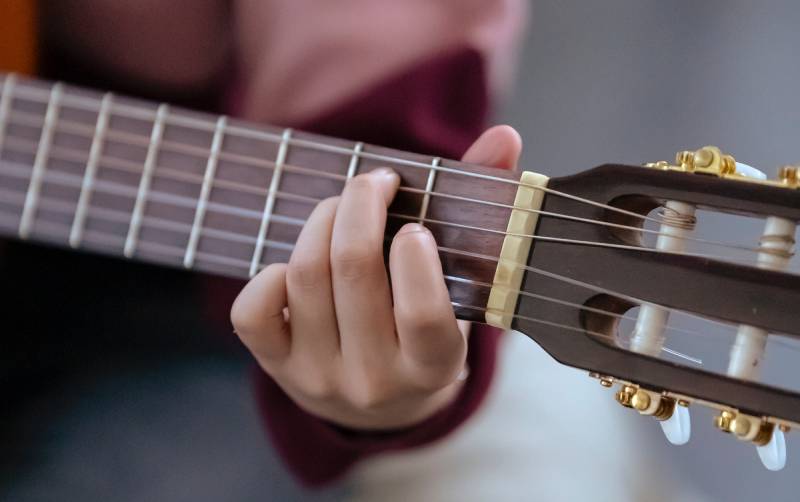
Finger Exercise and Warmup for Guitar
July 7, 2021
How to hold a Guitar Pick
July 12, 2021- acoustic guitar lessons
- best guitar position to play
- classical guitar position
- easy guitar lessons
- electric guitar beginner lessons
- first guitar lessons
- first lessons in guitar
- first thing to know about guitars
- guitar beginner lessons
- how to hold a guitar
- how to position your guitar when playing
- how to practice guitar
- indian guitar lessons
- learn guitar easily
- new to guitar
- standard guitar position
- starting guitar again
- ways to hold a guitar
How to hold a guitar.
also see How to hold a Guitar Pick.
Now that we have tried a few finger exercises it would be safe to assume that you have held your guitar in a playing position for the first time and attempted to perform the exercises as described.
Some may think this post should have been before the finger exercises as it is the most basic question. That is true but there is always a reason for the madness on this blog.

When one has no experience playing the guitar, this information would be exactly that, some more abstract information. A theoretical lecture on the right and wrong way to hold a guitar.
Now that you have the experience of trying to hold and play the guitar, you will relate to this tutorial and incorporate it’s points according to your comfort zone.
Do You Need A Lesson On How To Hold A Guitar:
Well, Yes. Especially if you have never held one before. There is the best way of doing it and it is directly related to the ease of playing. Access to the entire fretboard, ability to play chords along the whole neck, strumming hand position, and optimum leverage to either strum or pick individual strings. All this while minimizing fatigue and soreness which could lead to injury.
Guitar Playing Positions:
There are essentially two positions in which a guitar is played:
Seated and Standing.
The seated position is usually reserved for acoustic guitars, and electric guitars are normally played standing up. However, practice sessions are more about being comfortable but keeping in mind good posture.
Seated Positions:

This is called the standard position of holding the guitar.
If you’re right-handed, the guitar rests on your right leg. A chair height that allows you to place both feet flat on the floor and with no arm-rests, for obvious reasons.
It sometimes is a bit more comfortable to have the right foot slightly elevated. Sofas and bean-bag kind of seating will only put pressure on your spine and neck.
Either while sitting or standing a straight back and level shoulders will benefit your spine.

This illustration depicts the classical position of holding a guitar.
In this position, the guitar is placed on the left leg. Notice the elevation provided by the foot-stool and the angle of the fretboard.
We all know how complex classical music is, so is there a reason for the guitar to be held like this?
Yes, and very good reasons too. In this position, your body is supporting the guitar entirely, and your hands are completely free to play. The weight of your strumming arm on the body of the guitar holds the instrument in place.
The left hand is thus kept free to play any fret at the correct perpendicular angle. The higher fret positions, seventh and up, are accessed more easily than in the standard acoustic sitting position.

This is the campfire-style of holding a guitar and all of us have done it sometime. Fine for a one-off sing-song with friends and family but not recommended for daily practice sessions.
Standing:

While standing, the most important point would be the length of the guitar strap.
A strap too short would cramp up your wrists and elbows making it difficult to play.
A strap too long would make it tough to play chords as your wrist would not be able to go around the neck to play the lower strings comfortably.
Wear the guitar high enough that you can place your fingers on any string at any fret with ease and no discomfort. Notice that the angle of the fretboard is maintained for ease of play.
Try them all while doing your finger exercises and in time you will have your favorite. No matter which position you choose to adopt keep your posture in mind.
It is advisable though to mix a seated and standing position from time to time as the ergonomics of both positions are different. The position of the fretting and the strumming hand also changes slightly which could lead to a situation of unfamiliarity.
Get used to playing in both, seated and standing, positions.




